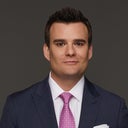Posted underEyelid Surgery q&a
My left eye is smaller than my right eye. Is it possible to make it bigger?
Hi sir my left eye is small than right eye .can be it possible big.
Answers (2)
From board-certified doctors and trusted medical professionals

Dr. Mehryar (Ray) Taban, MD, FACS
Oculoplastic Surgeon, Board Certified in Ophthalmology
Answer
More Eyelid Surgery Questions
See all Eyelid Surgery Q&AWE SEND PRETTY
EMAILS
What’s trending? Who’s turning heads? Which TikTok myths need busting? We’ve got you. No fluff, no gatekeeping—just real talk. Get our free, unfiltered newsletter.
